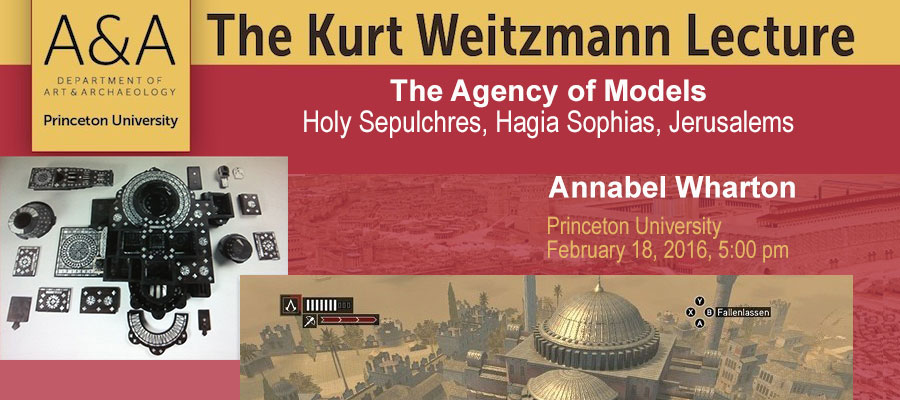The Agency of Models: Holy Sepulchres, Hagia Sophias, Jerusalems, 2016 Kurt Weitzmann Lecture given by Annabel Wharton (Duke University), Princeton University, February 18, 2016, 5:00 pm
Few art historians have considered “models” with the methodological rigor of Kurt Weitzman. Wharton seeks to emulate that rigor while asking very different questions about how models work in the world. Her lecture will probe three architectural models— an 18th-century model of the Church of the Holy Sepulchre, a 20th-century model of ancient Jerusalem, and a 21st-century digital model of Constantinople’s Hagia Sophia from the video game Assassin’s Creed—for two purposes. The first is historical: these models suggest different ways in which moderns have put the Byzantine past to use. The second is theoretical: these same models reveal the sources of all models’ (pie charts, algorithms, supermodels, etc.) autonomy and agency. She posits that the lessons learned from the acts of these scale models might prove useful to scientists and social scientists as well as architects and art historians.
Professor Wharton received her Ph.D. at the Courtauld Institute, London University. Initially her research focused on late ancient and Byzantine art and culture (Art of Empire [Penn State] and Refiguring the Post-Classical City [Cambridge]). Then she began to investigate the effects of modernity on ancient landscapes, notably in Building the Cold War: Hilton International Hotels and Modern Architecture (Chicago, 2001). She combined her interests in the ancient and the modern in her last two books: Selling Jerusalem: Relics, Replicas, Theme Parks (Chicago, 2006) and Architectural Agents: The Delusional, Abusive, Addictive Lives of Buildings (Minnesota, 2015). Architectural Agents considers material and digital buildings as agents that both endure pain and inflict it. Her current project, tentatively titled Manipulating Models, treats the theory and practice of models, conceptual and material, analogue and digital.
